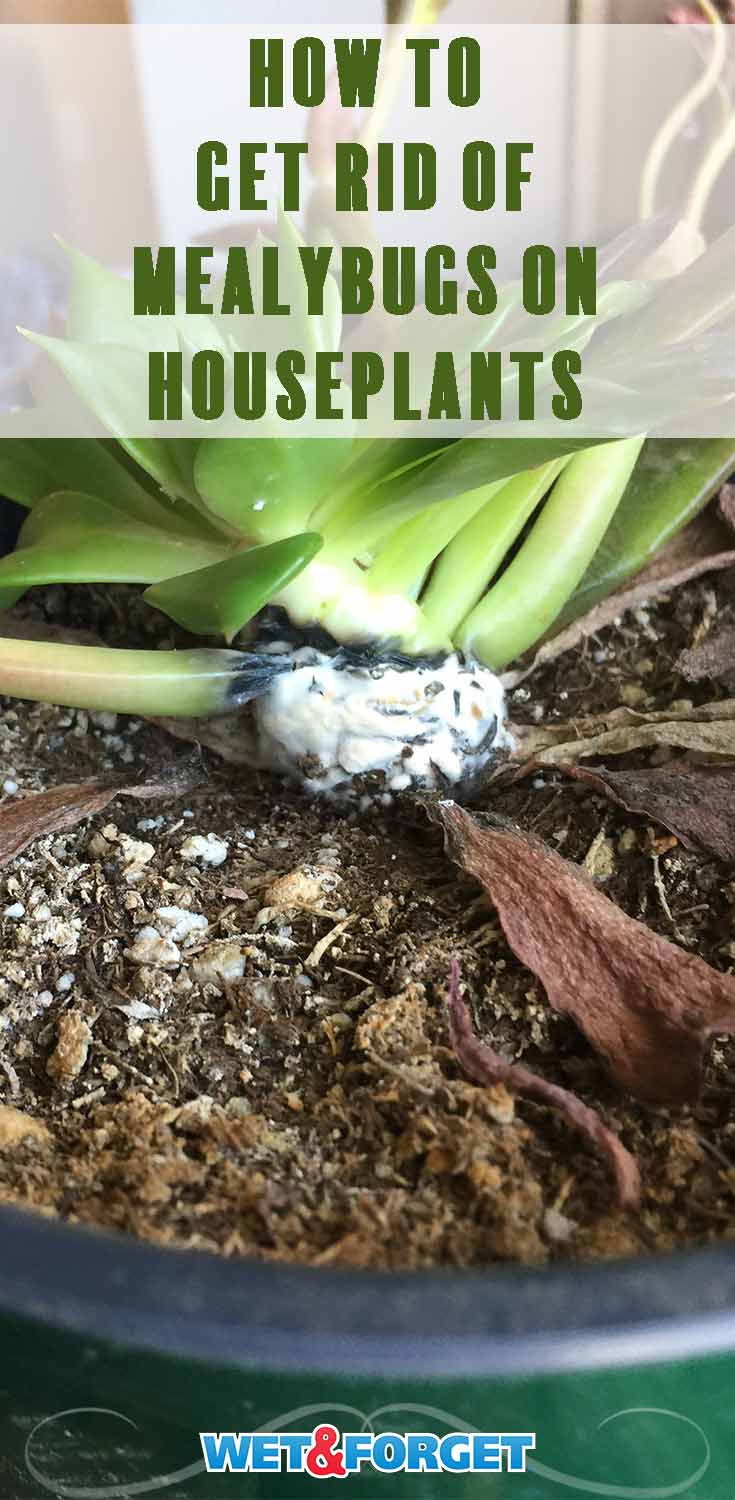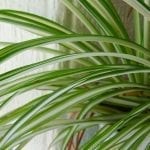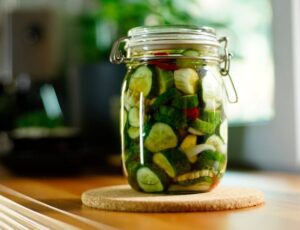
How to Get Rid of Mealybugs on Houseplants
Mealybugs feed in large groups, sucking the sap from houseplants. This slows plant growth and can cause leaf drops. They also excrete a sticky substance called honeydew, which attracts black plant mold. Eww!
We have the answers if you’re wondering how to kill mealybugs on your indoor plants.
What do mealybugs look like?
From a distance, mealybugs look like tiny balls of cotton on plant stems and leaves. Up close, they are tiny, soft-bodied, oval-shaped insects with a white, waxy coating.
Some mealybug species have hairy projections extending from their bodies, which look like numerous legs.
Immature mealybugs are orange, yellow, or pink and have no waxy coating. They crawl quickly around plants, looking for a place to feed. Adult mealybugs move about more slowly and tend to cluster in one spot.
Why are mealybugs harmful?
Mealybugs pierce the plant’s foliage to drink the sap. This affects the health of your plant. It feeds on plant sap by inserting a needle-like mouth into the plant and sucking the juices.
The reduction in sap weakens the plant causing yellow, wilted leaves. The bug’s sticky waste, honeydew, attracts ants and other pests. It can also cause a blackish mold to develop.
A large group of mealybugs will cause leaf drop and slow plant growth. The plant will eventually die if left untreated. An infestation of mealybugs, plus sticky honeydew and egg sacs on a houseplant, isn’t a pretty sight.
Are mealy bugs invasive?
Mealybugs lay thousands of eggs, which result in two to six new generations of insects per year. Mature pests crawl slowly, but when they find a feeding spot, they settle in and swarm in clusters.
Some mealybug species are considered invasive. The vine mealybug is considered an invasive vineyard pest. The pink hibiscus mealybug is an invasive pest native to tropical regions.
The pink hibiscus mealybug is found on hibiscus, citrus, coffee, mango, okra, soybeans, and more. The cypress bark mealybug is a severe pest on Monterey cypress trees and affects evergreens like cedar, cypress, and juniper.
How did my indoor plant get mealybugs?
They often hitched a ride into your home on infested plants bought from a plant nursery or garden center.
Can they travel from plant to plant?
Although mature mealybugs are slow movers, these pests can easily crawl from plant to plant. Usually, when leaves or branches overlap. One infested plant can spread mealybugs to adjacent houseplants.
Do certain plants attract mealybugs?
Many herbaceous perennials and woody ornamental plants attract mealybugs. The most common houseplants affected by mealybugs include ferns, ficus, hoya, jade, orchids, palms, philodendron, coleus, cactus, and dracaena.
Culinary herb plants such as rosemary and sage are also susceptible to mealybugs. They also like new growth at the top of plants.
Outdoor plants susceptible to these pests include fuchsia, gardenia, hibiscus, jasmine, mimosa cactus, coral bells (heuchera), and oleander.
Houseplants are vulnerable to the pest because the constant mild temperatures indoors encourage mealybugs to multiply. And, indoor plants aren’t usually exposed to the insect’s natural enemies, which keep infestations under control.
How can I get rid of mealybugs on my indoor plants?
Apply Insecticidal Soap
Insecticidal Soap is an organic, eco-friendly way to kill mealybugs on houseplants. Insecticidal soaps are preferable to pesticides because they:
- Do not leave behind residue after application
- Are non-toxic to pets and humans
- Do not harm beneficial insects
- Are often less expensive than chemical pesticides
Insecticidal soaps are made from plants or petroleum-based oils. As the product is applied, it encounters the pest and eliminates it, dissolving the pest’s waxy coating and then suffocating it.
You can buy insecticidal soap as a ready-to-use spray at garden centers. You can also create your own with a few household ingredients. For best results, spray the plant once a week until the plant recovers.
When applying insecticidal soap to houseplants, Danny Lipford, home and garden expert, mentions, “If this is your first time using insecticidal soap, conduct a test spray on an inconspicuous branch to make sure your plant can tolerate it. Before proceeding, wait 24 hours and look for burned or scorched spots on the leaves. If the insecticidal soap damages the plant, dilute it in half and try again. If it still burns, you probably need to avoid spraying that plant.”
Remove any insect-damaged foliage by trimming and tossing infested leaves and stems. This will also help eliminate any insects hiding in the foliage.
Apply Alcohol with a Cotton Swab
For a few bugs or a minor infestation, kill them by dabbing the insects with an alcohol-soaked cotton swab while on the plants.
Wash Mealy Bugs Down the Drain
Knock off mealybugs by holding the houseplant under running water in the sink. Or, fill the sink with soapy water. Swish and dip the foliage to remove insects.
Mealybugs can be difficult to eliminate because immature insects hide in leaf folds and stem crotches where water spray and pesticides cannot reach them.
How can I prevent mealybugs from coming back?
One of the best ways to prevent mealybugs is to keep infested plants out of your indoor garden. While shopping for plants, inspect the foliage for mealybugs before you buy.
Mealybugs are usually found on the underside of a plant’s leaves and stems, but they will gather to feed anywhere on plants. Check leaf folds and around leaf tips for signs of bugs.
Even if the plants appear bug-free, it’s a good idea to quarantine the plants for a few weeks to ensure. If a plant is beyond saving, it’s best to toss it out.
Bonus tip: Danny Lipford says, “An alcohol spray is effective against mealybugs, whiteflies, red spider mites, aphids, fungus gnats, and scale. To make the spray, mix 1/2 to 1 cup of rubbing alcohol with 1 quart of water in a pump-spray bottle.”
Image by Rebecca McMahon.












